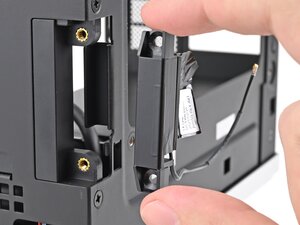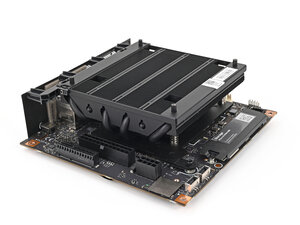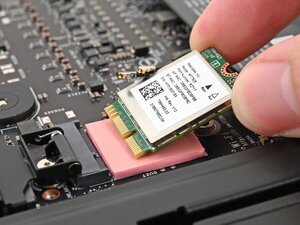
Antennas

Antennas

CPU Fan

Case

Fastener Kit

Front Panel

Heatsink

Mainboard

Power Supply

RTC Battery

Wi-Fi Module
|
1 Risposta Punteggio 0 |
PC restarts continuous, also after installing new processor, why? |
Questi sono alcuni strumenti di uso comune usati per lavorare su questo dispositivo. Potrebbe non essere necessario ogni strumento per ogni procedura.
Framework, the company that got its start making modular, upgradeable, and repairable laptops (like the Framework 13 and Framework 16), announced their foray into the desktop space on February 25th, 2025 at their "[2nd Gen]" event keynote in San Fransisco, launching the Framework Desktop.
The Framework Desktop is a 4.5L small-form-factor desktop PC built around the standard mini ITX form factor, with a custom board using AMD's new Strix Halo Ryzen AI Max series APUs. Targeted squarely at the emerging local/offline LLM scene, the Framework Desktop was also advertised to perform well in gaming workloads, thanks to RDNA3 GPU firepower in the AI Max APUs.
The board features a soldered APU and soldered LPDDR5x. Built on the mini ITX motherboard size, it also features two PCIe 4.0 M.2 slots for storage, standard motherboard headers and fan headers, standard ATX power ports (24-pin board and 12-pin CPU power), and a single PCIe x4 expansion slot. The cooling solution was developed in partnership with Cooler Master and Noctua.
The case, at 4.5L, also includes a custom FSP flex ATX power supply, customizable front fascia, and Framework expansion cards as front ports.
Marketed partly as a Mac Studio alternative, the Framework Desktop is available with up to 128 GB of LPDDR5x-8000 memory over a 256-bit bus. Starting at $1099 for the 8-core, 32 GB configuration, the Framework Desktop is also available with 16-cores / 64 GB for $1599, and 16-cores / 128 GB for $1999, plus numerous aesthetic options. If you provide your own case and power supply, the base mainboard is available by itself for $799.
At its highest configuration, the Framework Desktop costs over $3800.
The Framework Desktop is easily recognizable by its signature customizable tiled front panel, its expansion card ports, and its custom AMD mini ITX board.
APU (Processor):
APU (Graphics):
Cooling:
Memory:
PSU: Flex ATX 400W 80+ Gold (in collaboration with FSP)
Storage: 2x NVMe PCIe 4.0 x4 M.2 2280 slots, up to 16 TB total
Connectivity:
Audio: Realtek ALC623
Front ports:
Rear ports:
Additional motherboard connectors:
Size:
Ultime 24 Ore: 39
Ultimi 7 Giorni: 264
Ultimi 30 Giorni: 1,222
Tutti i Tempi: 11,112